Marble is a metamorphic rock consisting predominantly of calcite or dolomite. It is a metamorphosed carbonate rock (limestone or dolomite rock).
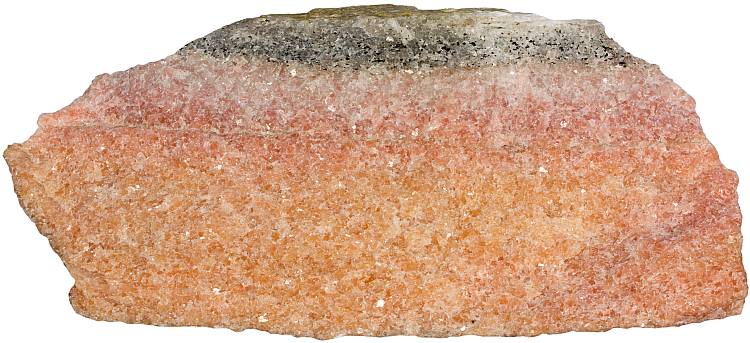
Marble is a sparkling and typically granoblastic rock. Granoblastic rocks have uniformly sized, equidimensional, anhedral grains produced by recrystallization in a solid state (metamorphism). Grain boundaries are usually straight or slightly curved and triple junctions between the adjacent grains define angles of about 120°2.
The term “marble” in geology is restricted to true metamorphic rocks in which the carbonate minerals have recrystallized. This process generally increases the average grain size, which gives marble its sparkling and attractive appearance. The sparkle is the reason why we call it that way — Greek marmaros, sparkling. In commerce, coarse-grained sedimentary carbonate rocks that take polish (grainstone, travertine) and sometimes even alabaster (gypsum) are also treated as marble1.
Pure calcitic limestone generally yields phaneritic (visibly crystalline) rock. Dolomitic rocks may metamorphose to dolomarble (dolomite marble) or calcitic marble if impure. Younger rocks are usually calcitic. Dolomarbles are more frequent in older (precambrian) terranes.
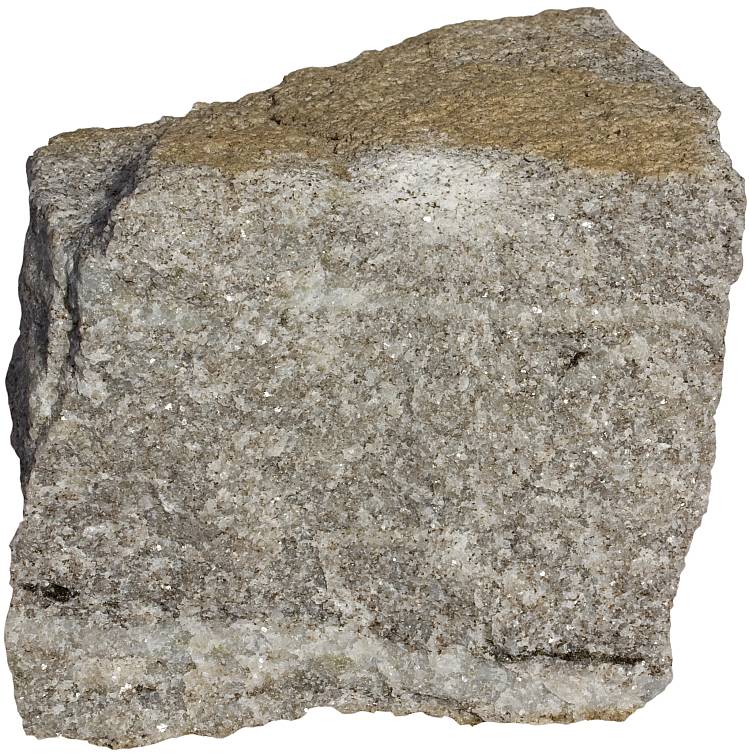
Older marbles are often dolomitic. This sample comes from a Paleoproterozoic terrane. Ahola, Finland. Width of sample 8 cm.
Impurities in carbonate protoliths (mud, sand, organic matter) considerably complicate the metamorphic reactions. Reaction between calcite and silica (sand) yields wollastonite and liberates carbon dioxide:
CaCO3 + SiO2 → CaSiO3 + CO2 (Although in real rocks the sequence of reactions is more complicated. Wollastonite is not among the first minerals to form during the marmorization process.)
Similar reaction with dolomite rock yields calcitic marble with Mg-rich olivine (forsterite):
2CaMg(CO3)2 + SiO2 → Mg2SiO4 + 2CaCO3 + 2CO2
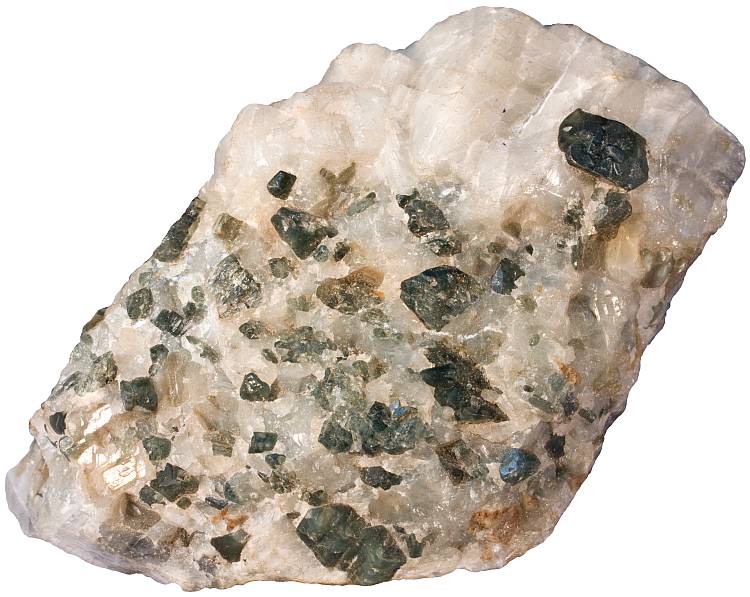
Forsterite with calcite in a metamorphosed dolomite rock. Width of sample 9 cm.
Thermal metamorphism of dolomite rocks around contact aureoles produces calcite with periclase (MgO) which is later hydrated to brucite (Mg(OH)2):
CaMg(CO3)2 → CaCO3 + MgO + 2CO2
Metamorphism of impure dolomite rock may (in addition to forsterite) also yield tremolite, diopside, talc, serpentine, monticellite, merwinite, humite, and anthophyllite1. Ophicalcite is a variety that contains serpentinized forsterite or diopside.
If the calcitic protolith contained clay, Al-rich phases like Ca-garnets (grossular, andradite) and several other minerals like scapolite, melilite, and epidote may form. In dolomitic mudstones, spinel and amphiboles may form in addition to the aforementioned minerals. Iron-bearing phases in protoliths metamorphose to magnetite.
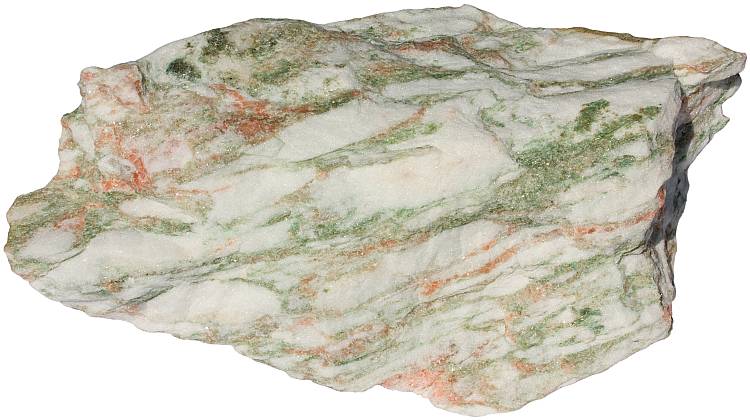
Conglomeratic variety, which is composed of white dolomite, reddish calcite, and green mica fuchsite. Fauske, Norway. Width of sample 20 cm.
Rocks closely related to marbles are skarns. They form when silicate fluids from hot igneous intrusions react with carbonate country rocks. The result is a mineralogically complex and very diverse mixture of calc-silicate minerals with calcite. Skarns are often mined because they contain valuable ore minerals. Skarns are too rich in silicate minerals to be called marble and sometimes they contain no carbonate minerals at all (used up in metamorphic reactions).
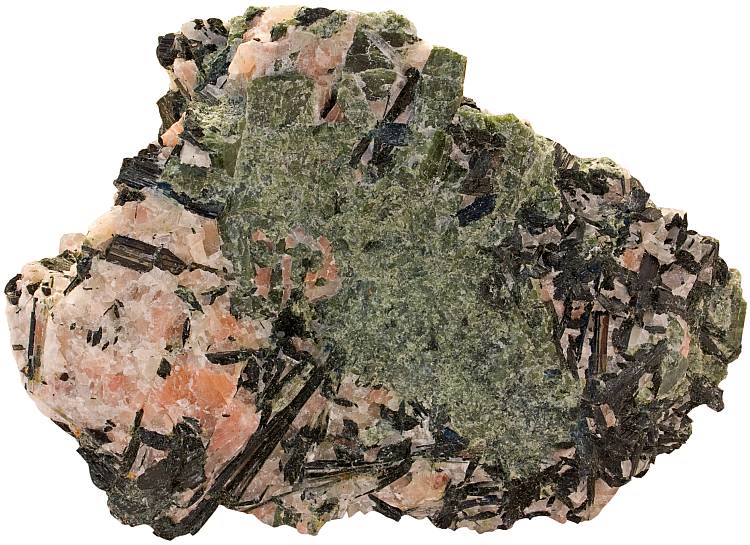
Skarn sample consisting of pink calcite, black actinolite, and green diopside. The carbonate protolith was almost certainly dolomitic because both actinolite and diopside are magnesium-bearing minerals. Tapuli, Sweden. Width of sample 10 cm.
Organic matter in limestone metamorphoses to mineral graphite. Graphite gives gray or speckled appearance to the rock, but metamorphic reactions of carbonaceous material with water-rich fluid may liberate carbon dioxide and methane, leaving the rock snow-white:
2C + 2H2O → CH4 + CO2
This happens around magmatic intrusions (water-rich fluid is of magmatic origin), because the devolatilization of marble produces CO2-rich fluid2.
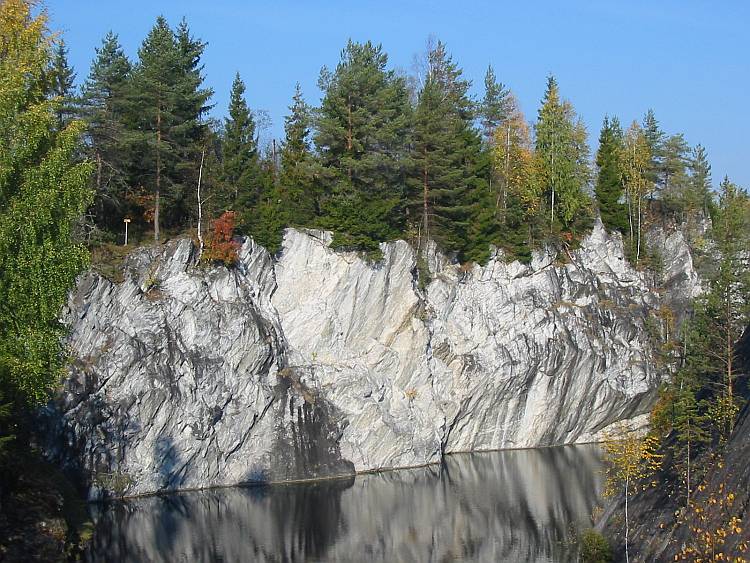
An outcrop in Karelia, Russia. White mineral is calcite, dark-colored streaks are composed of graphite.
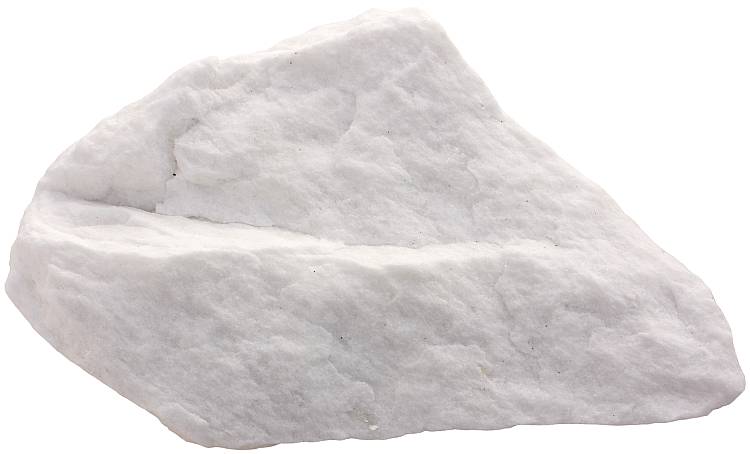
Marble may be snow-white either if the protolith was very pure or if the rock has been bleached by a water-rich fluid. Fauske, Norway. Width of sample 14 cm.
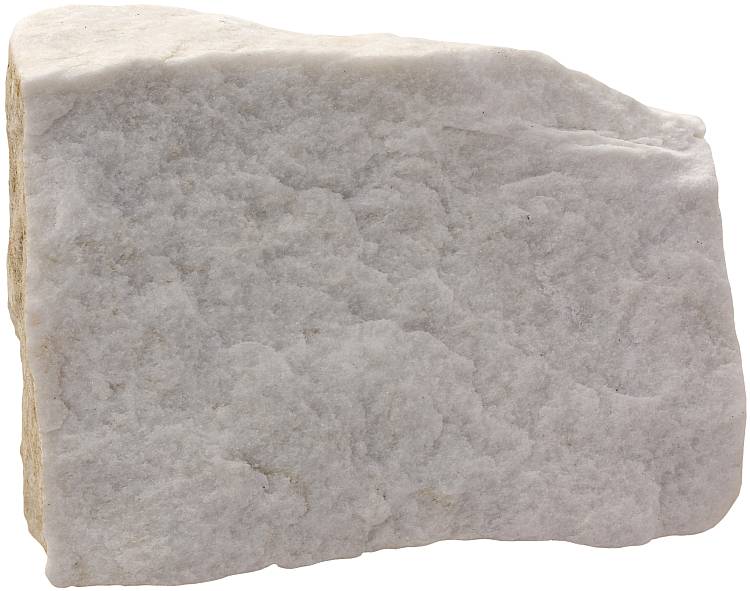
This rock sample is not marble, it is quartzite (metamorphosed sandstone). Quartzite and marble may be very similar in appearance, but marble is a soft rock, which is easily scratched with a needle. And it also effervesces in dilute hydrochloric acid while quartzite does not react. Dolomarble is more resistant to acids, but it too will effervesce if powdered (scratched with a needle first). Hinnøya, Norway. Width of sample 9 cm.
The coarsening of average grain size with metamorphism is a process known as the Ostwald ripening. This is a spontaneous thermodynamically-driven process that occurs because molecules on the surface of a grain are energetically not as stable as the ones inside. This also explains why small soap bubbles merge into larger ones. The major difference here is that the coarsening of marble takes millions of years. Protoliths may be rich in fossils as limestones often are, but the recrystallization (also known as marmorization) completely obliterates any hint of it.
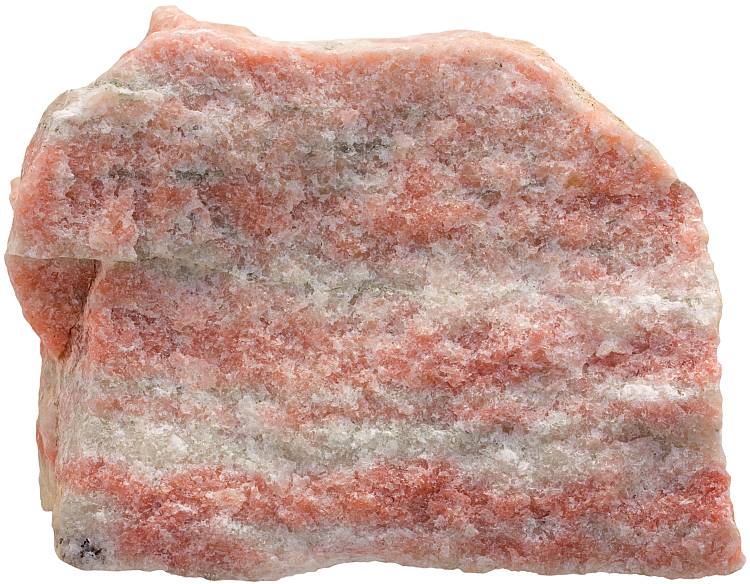
A coarse-grained calcitic variety from Leivset, Norway. Width of sample 9 cm.
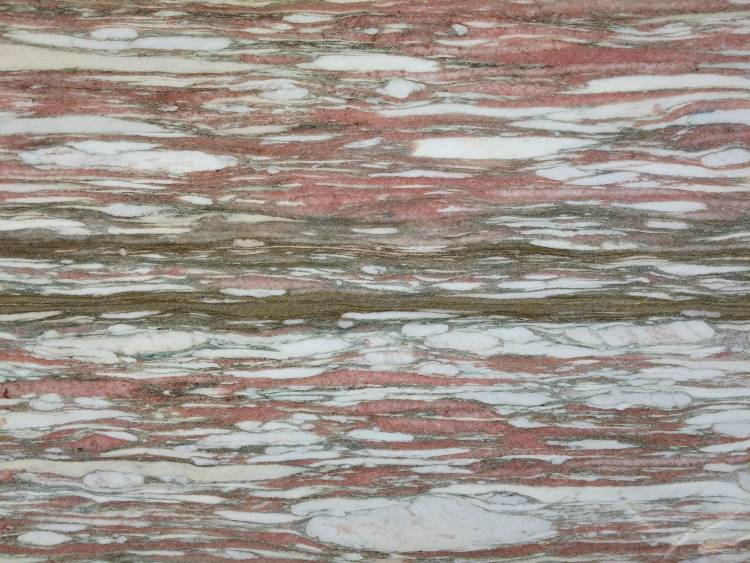
A block of metaconglomerate consisting of white heavily stretched dolomarble clasts in a pink calcitic matrix with a significant amounts of silicate minerals, especially sheet silicates. Løvgavlen quarry, Norway.
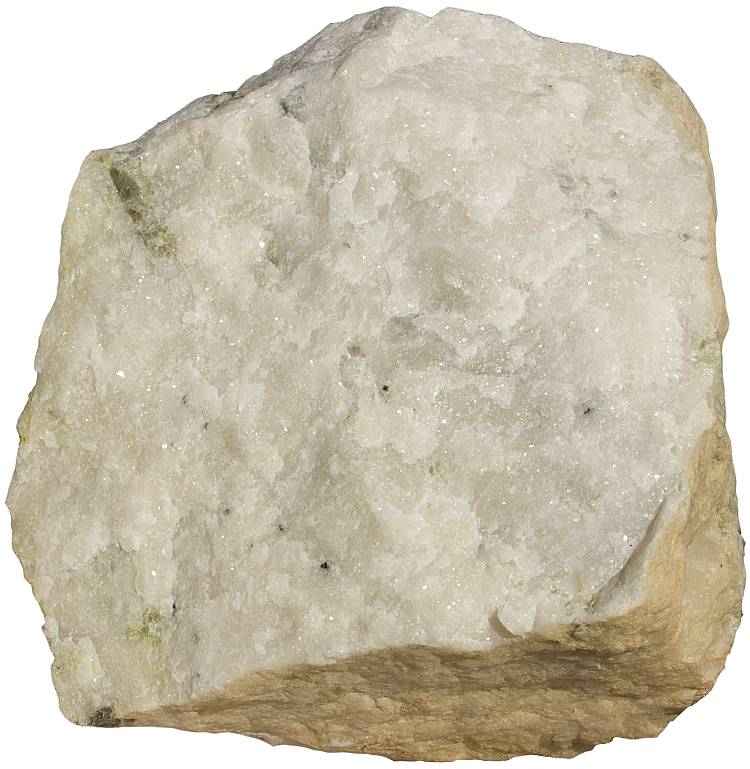
Carbonatite is a relatively rare igneous rock that compositionally resembles marble, although there are significant differences in minor element compositions. The genesis of carbonatite and marble are completely different because the first is a true magmatic rock. This carbonatite sample is composed of calcite with green fluor-apatite. Siilinjärvi, Finland. Width of sample 18 cm.
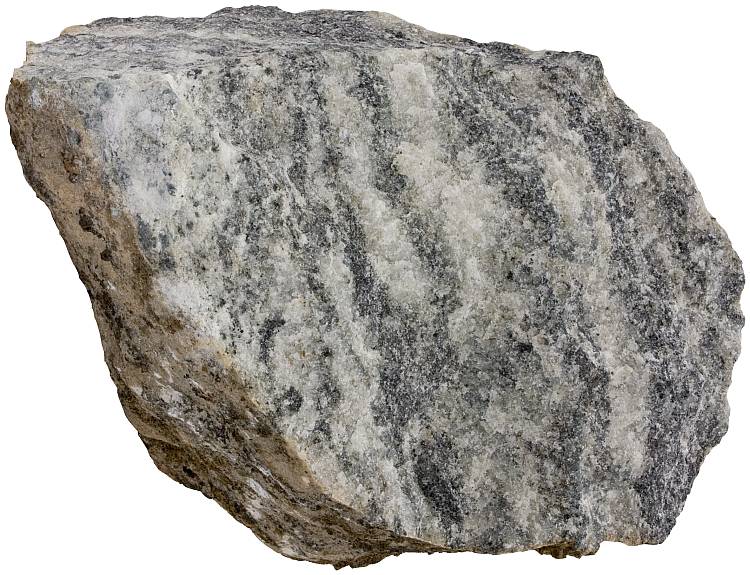
A sample of carbonatite, which may be easily misidentified as graphite-bearing marble. The sample is from Alnö Island in Sweden. Width of sample 13 cm.
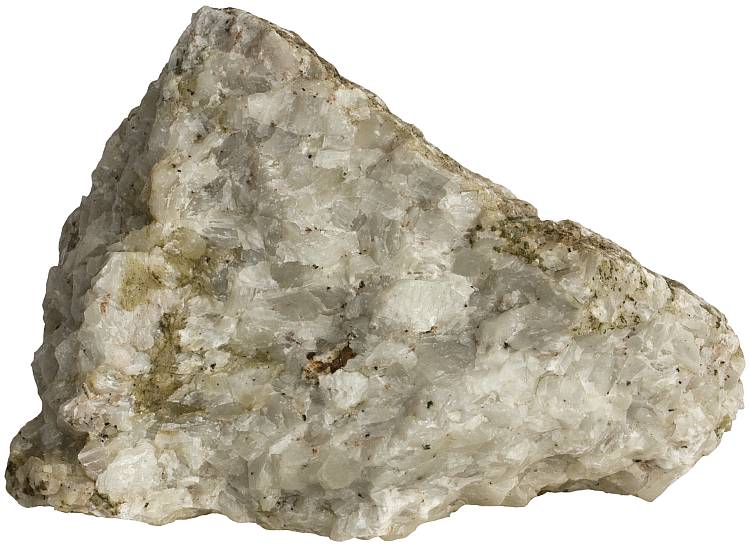
Carbonatite may look like a very coarse-grained marble variety. White mineral is calcite just as it is usually in marble. But carbonatites are rich in rare earth elements (>500 ppm) and they also contain much more strontium (>700 ppm) barium (>250 ppm) and vanadium (>20 ppm)1. Alnö, Sweden. Width of sample 8 cm.
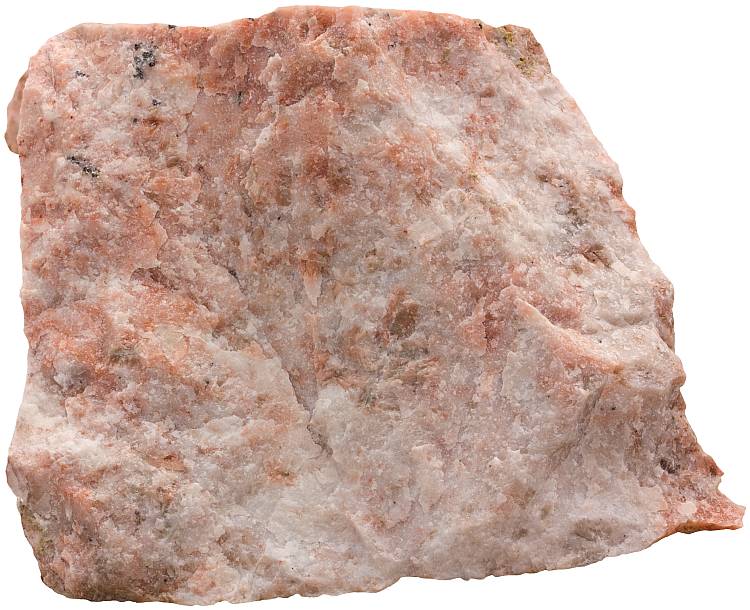
Albitite is a hydrothermal metasomatic rock that may superficially resemble marble, but it is composed of silicate feldspar-group mineral albite. Kiruna, Sweden. Width of sample 11 cm.
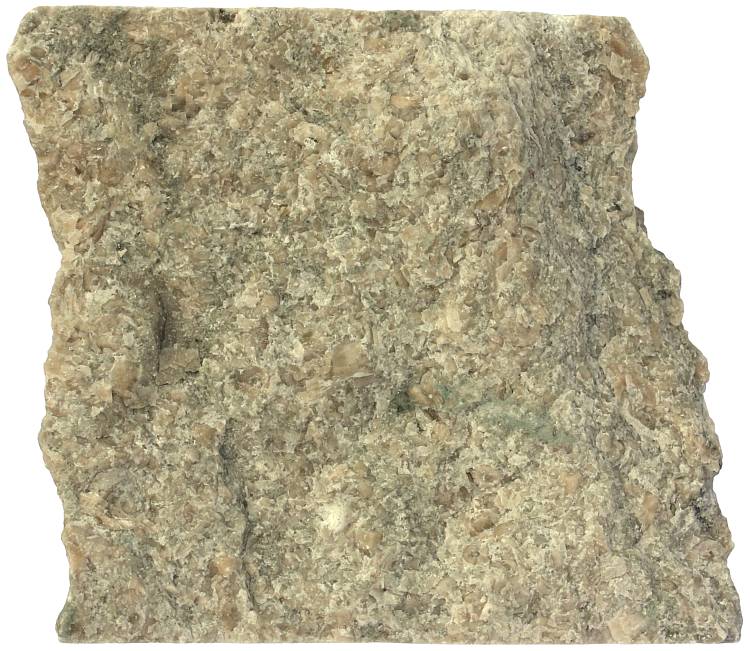
Marble is a metamorphic rock. However, mostly because of marketing reasons, some coarse-grained limestones (grainstones) and dolomites are also sold as marble varieties. The sample is from Estonia. Width of sample 10 cm.
Marble is extensively used as a dimension stone and it has been favored by architects since the antiquity. Marble, because it is composed of calcite, is a relatively soft material, which makes it very useful for sculptors. David by Michelangelo, one of the most famous sculptures of all time, is made of marble from Carrara. Lots of historical landmarks are made of it. Marble continues to be an important building material. Both pure white and impure varieties with decorative textures (flow textures develop easily in calcitic marble even at low temperatures) and colors are valuable. The latter are often imitated in modern background patterns. It has one major weakness. It is less durable than silicate rocks like granite and gabbro because of acids dissolved in rain that slowly destroy it. This is why marble is best used indoors where it is protected from the elements.
Marble is also quarried as a source of lime in areas where sedimentary carbonate rocks are lacking. Lime is an artificial material (CaO or Ca(OH)2 in hydrated form) made by heating calcium carbonate at about 1000°C in a lime kiln. Lime is used mostly in the cement industry, but it has many other industrial uses as well. Crushed rock may be used to combat acidification of lakes, for example, or to raise the pH of soils.
References
1. Bowes, D. R. (1990). Marble. In: The Encyclopedia of Igneous and Metamorphic Petrology (Ed. Bowes, D. R.). Springer. 479–480.
2. Best, Myron G. (2002). Igneous and Metamorphic Petrology, 2nd Edition. Wiley-Blackwell.
3. Bell, K. (2004). Carbonatite. In: Encyclopedia of Geology, Five Volume Set. Academic Press. 217-233.
Leave a Reply